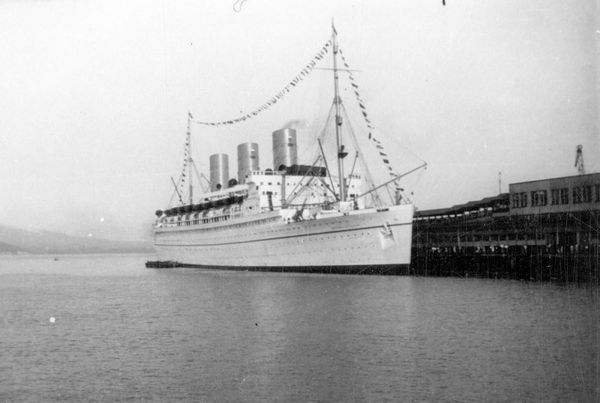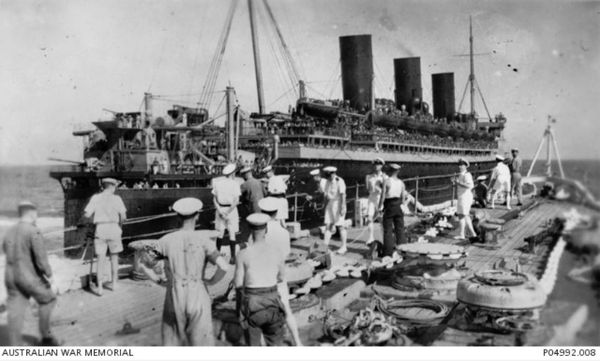HMT Empress of Japan
From Our Contribution
Contents
Remarks
Built for Canadian Pacific Steamships, and used on the trans Pacific routes between Canada and the Far East (Vancouver-Yokohama-Kobe-Shanghai-Hong Kong). In 1942 after the Japanese attacks of December 1941, she was renamed HMT Empress of Scotland, and when the Hamburg Atlantic Line purchased her in 1957 they renamed her TS Hanseatic. Despite being 'renamed' in early 1942, she was still known as Empress of Japan during the 3rd Convoy as told in Peter Plowman's book 'Across the Sea to War'.
Following WW2, the Empress of Scotland returned to service but this time on the other side of Canada, in the Atlantic. She was rebuilt between 1948 and 1950 at Fairfield in Glasgow to suit Atlantic weather, and completed her last trans-Atlantic run in 1957.
As the TS Hanseatic, she was larger and able to carry more passengers on the Hamburg - New York route. On 8 Sep 1966 she caught fire in New York, gutting 5 decks and the engine room. Not commercially repairable she was scrapped soon after.

